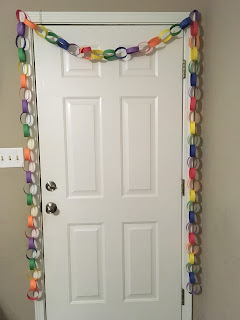It’s the 400 Year Anniversary of the Pilgrims’ Voyage to America!
As a homeschool mom, I’m always looking for ways to bring history to life and to give my kids something to make school more exciting. So, when I saw that this year marks the 400th year anniversary of the Pilgrims’ voyage to America, I knew I couldn’t let this event slip by without recognition.
After some thought, I’ve come up with a few different ideas that we’re going to try. None of these will add much time to our school day, and none will cost us much money. But, they should all add some fun, some excitement, and, of course, some learning to our fall semester.
The Mayflower set sail from England on September 6th, 1620 and landed in America on November 11th, 1620. That’s a 66 day trip, and 66 days that we can spend educating our kids about the journey. So, I plan to kick it off big, spend a little time each day learning something new, and then end with a bang.
First, I want to kick off the event by watching a movie about the Pilgrims and their voyage on the Mayflower. Who doesn’t love a good movie? And if it’s a little educational, that makes it all that much better! So, on September 6th, we’re going to watch The Mouse on the Mayflower. I’m sure there will be some inaccuracies in the movie (probably a lot of them, since the main character is a cartoon mouse, lol), but we can talk about those afterward, and learn even more!
Also on the 6th, we’re going to have a meal to commemorate the Pilgrims’ trip on the Mayflower. They were stuck on that boat for 66 days, and were limited on what food they could eat. Many of their meals consisted of hard tack, dried fish and meat, salt pork, cheese, dried fruits, and pickled foods. And, since their water wasn't good for drinking, they had beer. Obviously, I’m not going to let my young ones drink beer (I don’t even drink the stuff), but for this one meal we’re going to try Ginger Beer (a non-alcoholic drink similar to Root Beer, but more British). We’re also going to eat some homemade jerky, salt pork (which I’ve never tried), hard tack (made together the day before, using this recipe), cheese, dried apples, and pickled okra. The cost of the salt pork and ginger beer set us back about $10, but the other foods we already had on hand. So, this ends up being a pretty inexpensive activity.
We'll also watch some videos about Pilgrim life during the 66 days (probably on Fridays, when we don't do regular seatwork). Here are some I've found:
American Experience: The Pilgrims
Pilgrim Life with Scholastic News
The Story of the Pilgrims for Kids
The Story of the Mayflower and the First Thanksgiving for Children
Best Backyard Pilgrim and Indian Story Ever
Finally, on the anniversary of the day they arrived in America, November 11th, we’re going to have a big celebration. After we read the last link on the chain, we’ll watch Free Birds. (It's on YouTube for free right now, but I would highly recommend buying it; we own it and watch it every year as part of our Thanksgiving Day celebration).
And, we’ll eat a meal similar to something they might have eaten after they arrived and got settled in: venison stew and fresh homemade bread, with berries and grapes for dessert.
I’m really looking forward to celebrating the 400 year anniversary of the Pilgrim voyage with my kids. It’s going to be a great and adventurous time of learning for us. What types of things are you planning on doing with your kids this year to teach them about the Pilgrims? Let me know in the comments below!
R Lea







